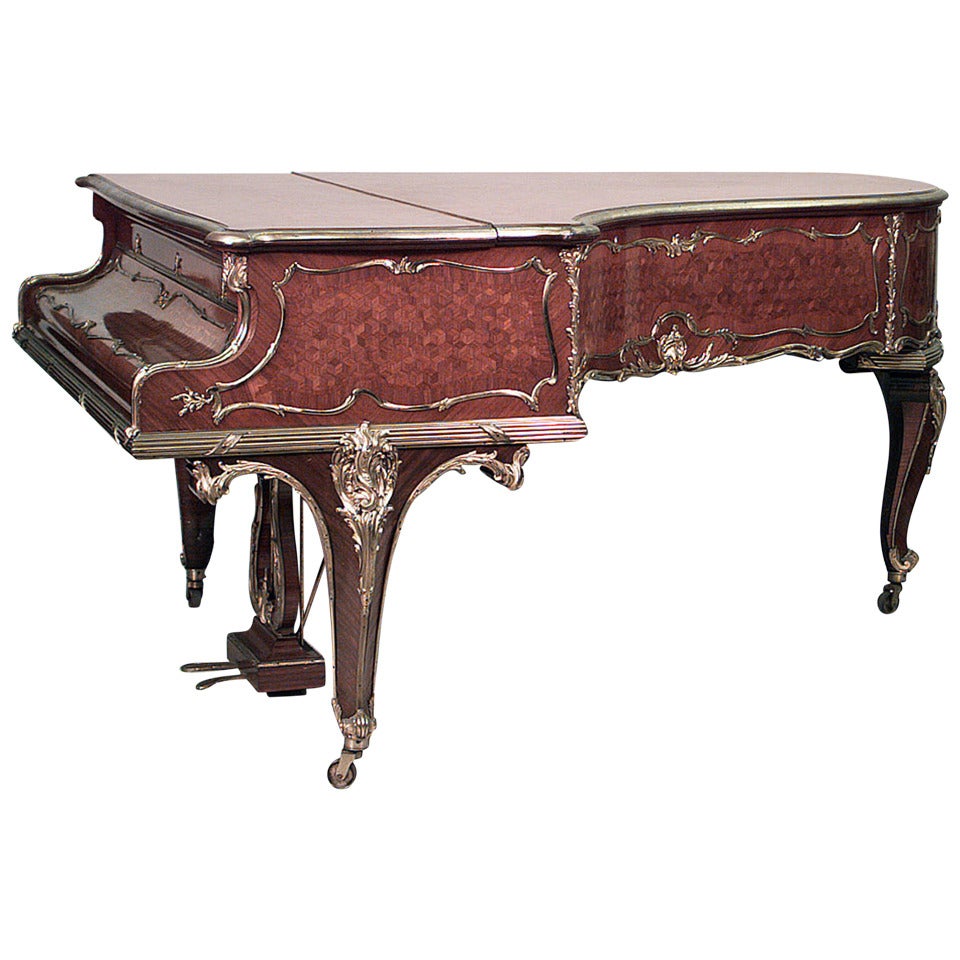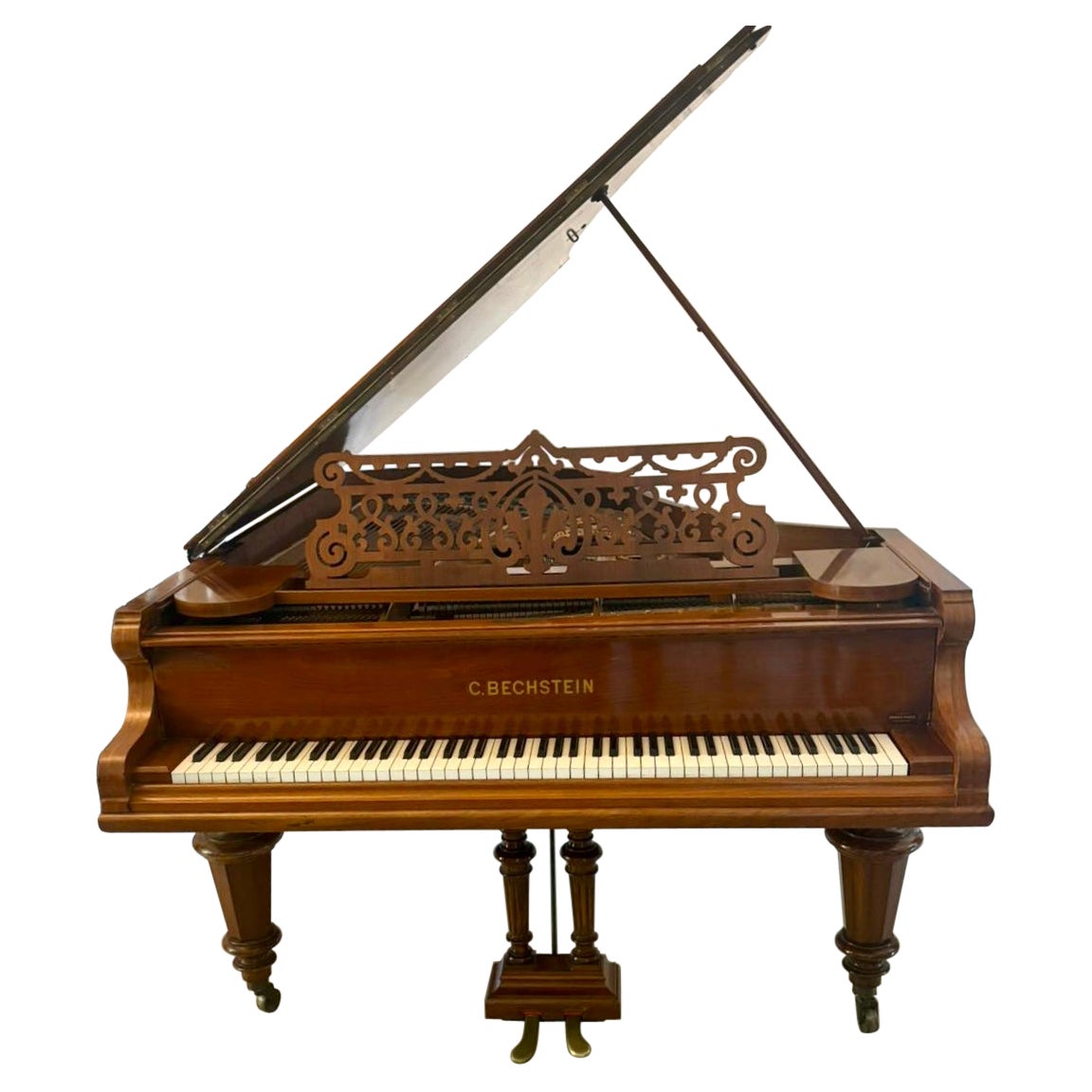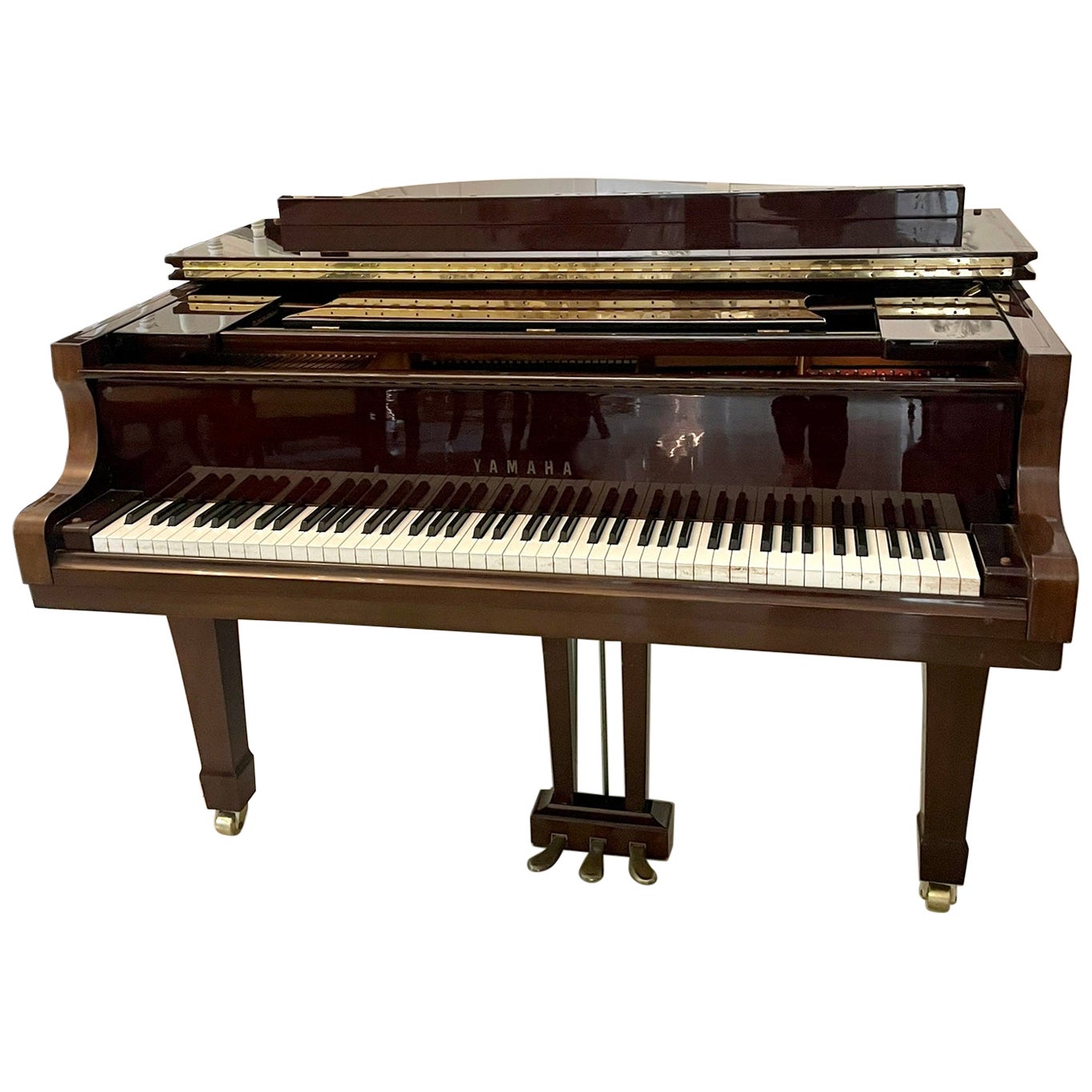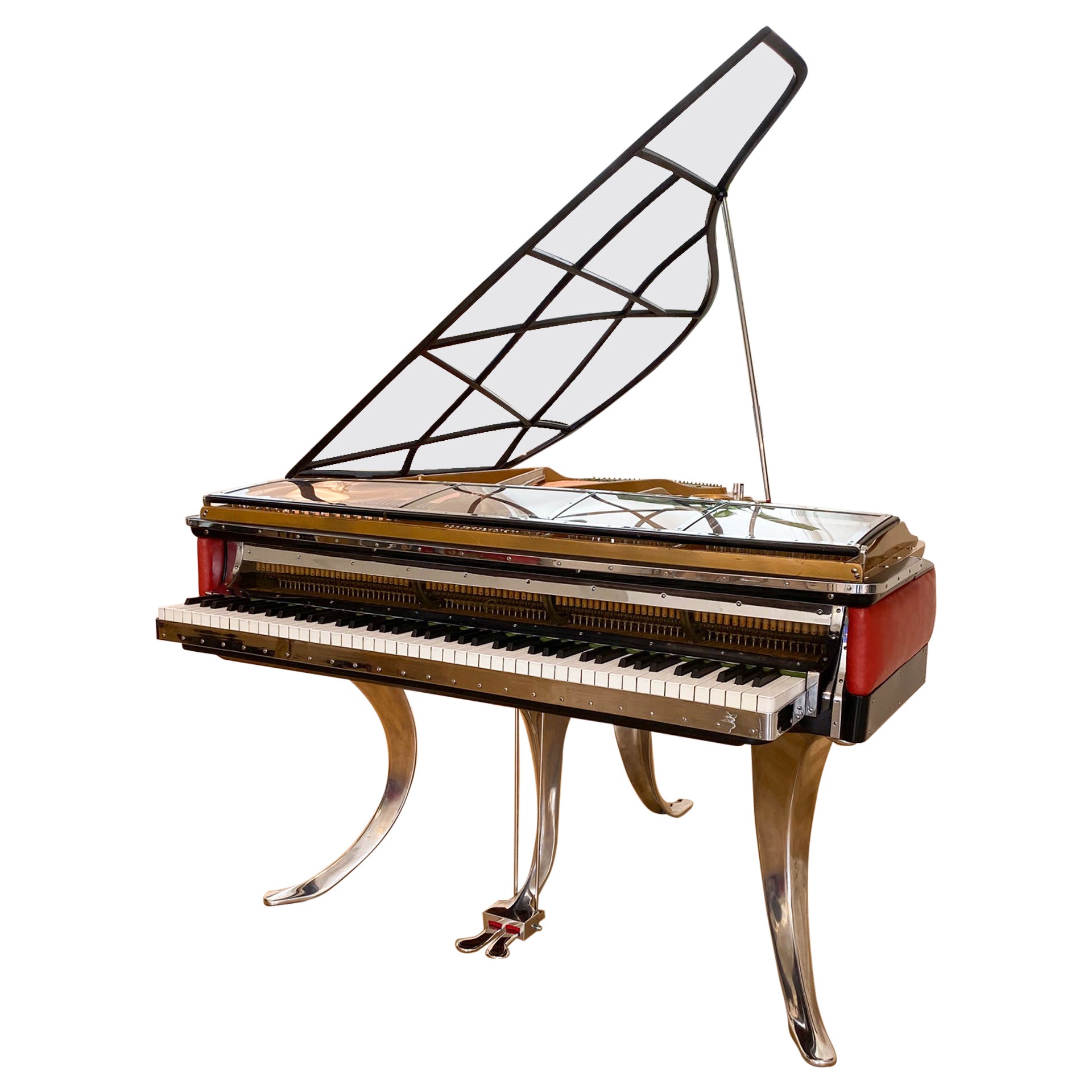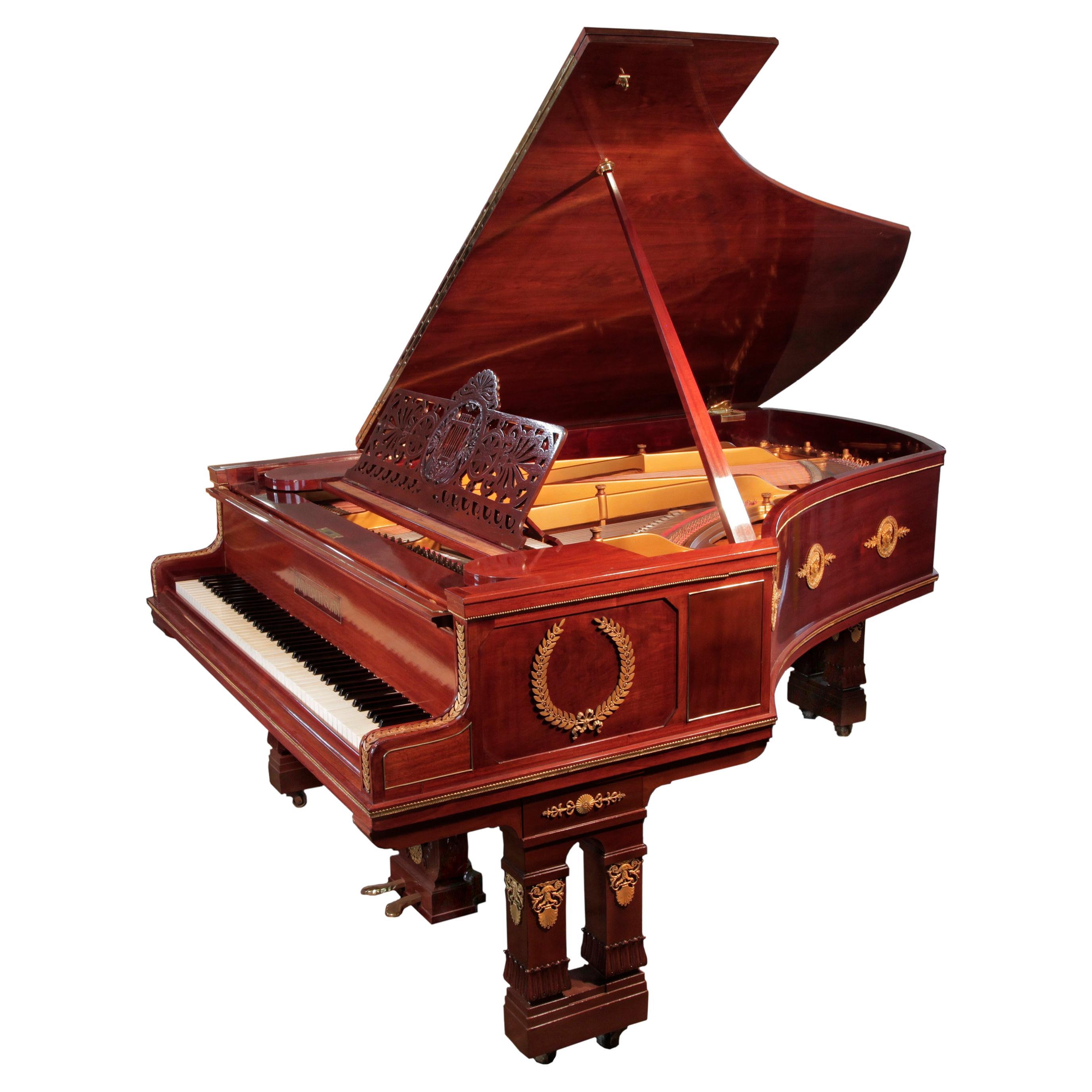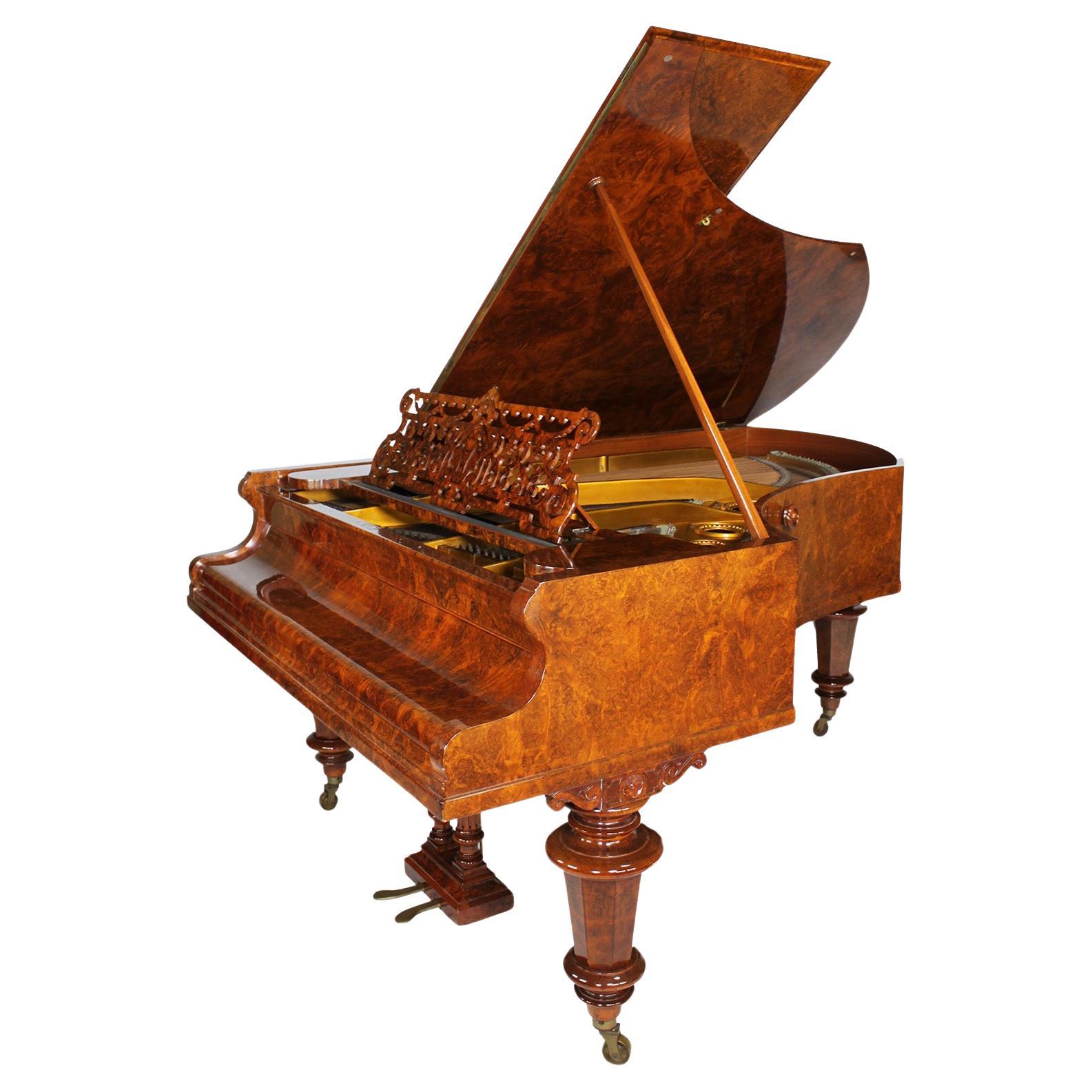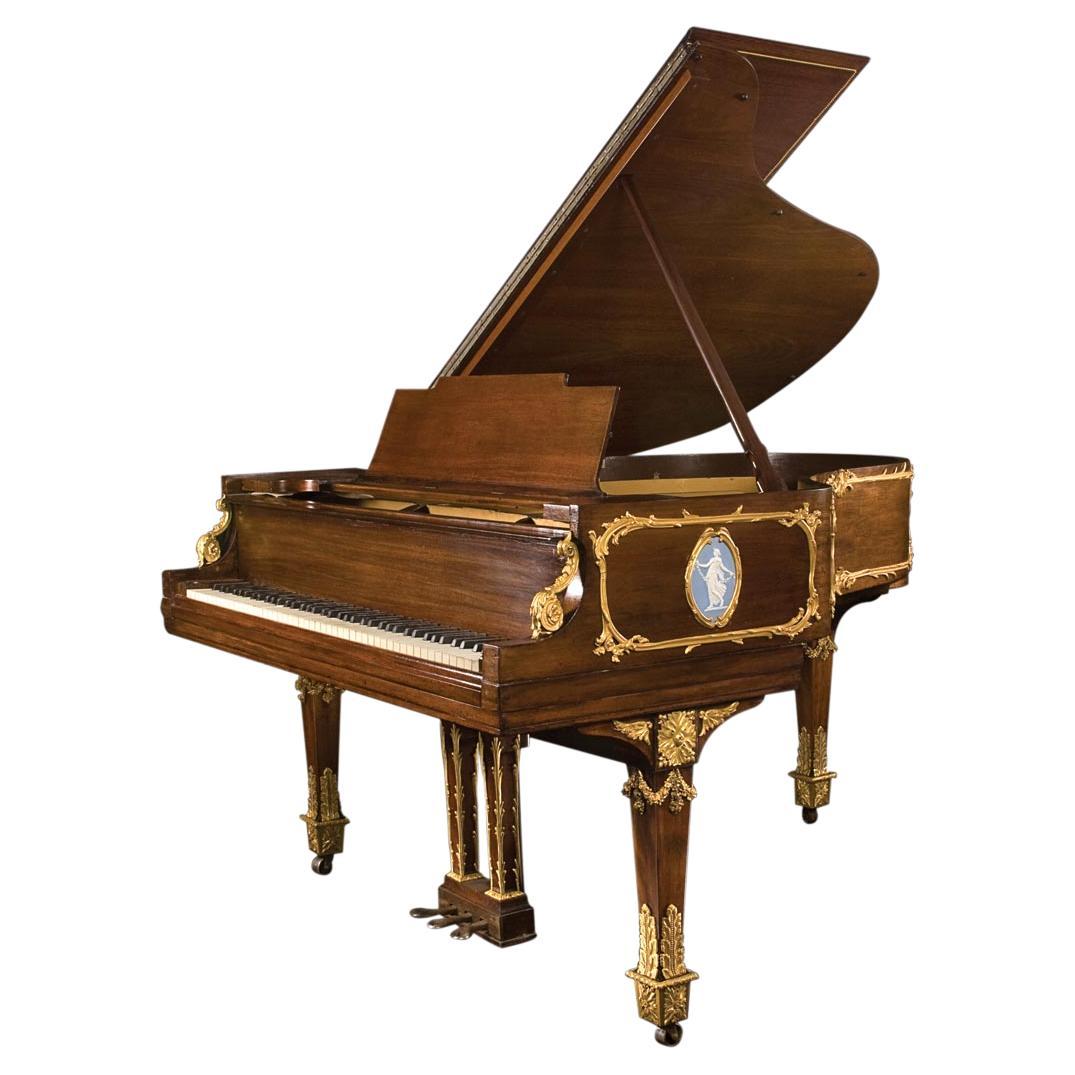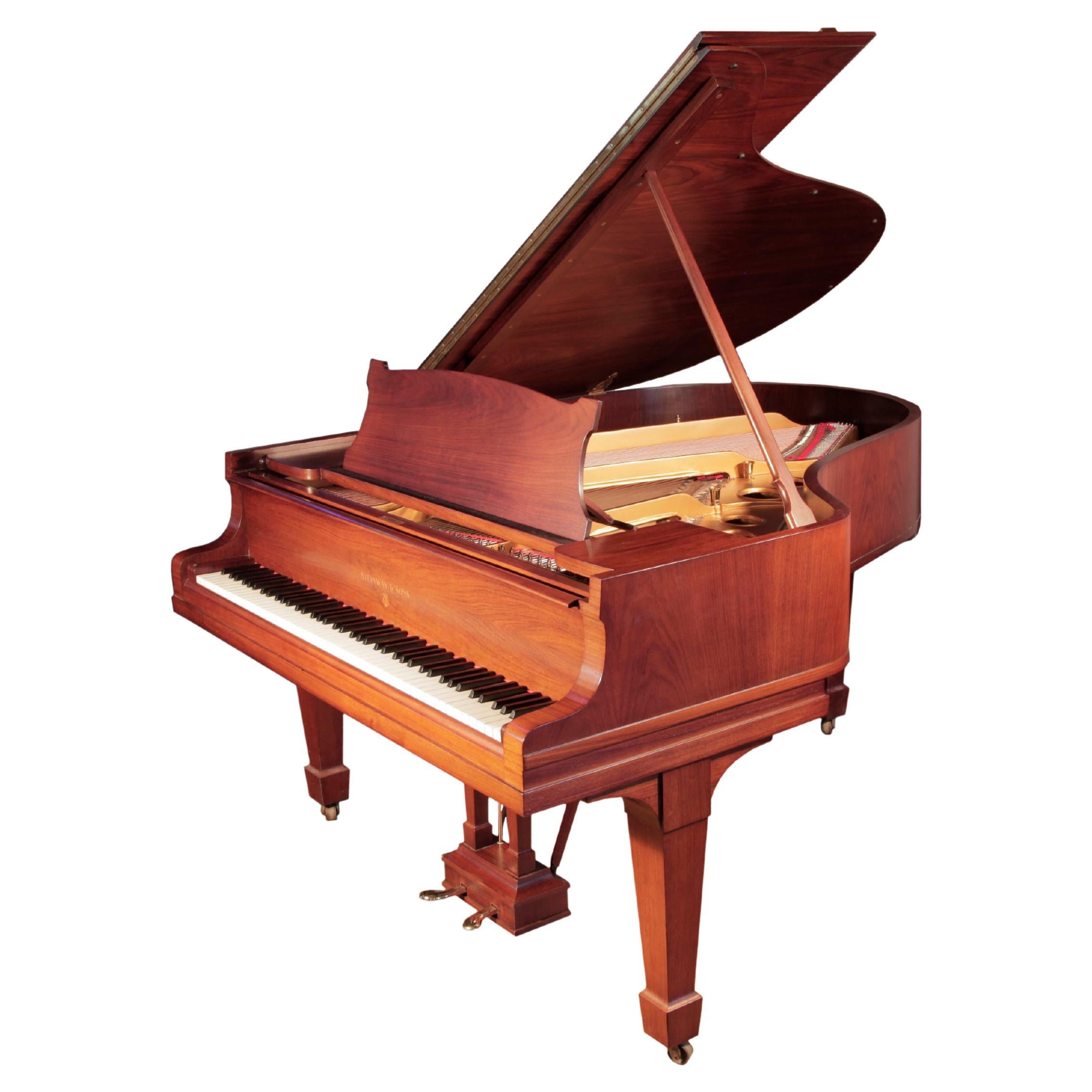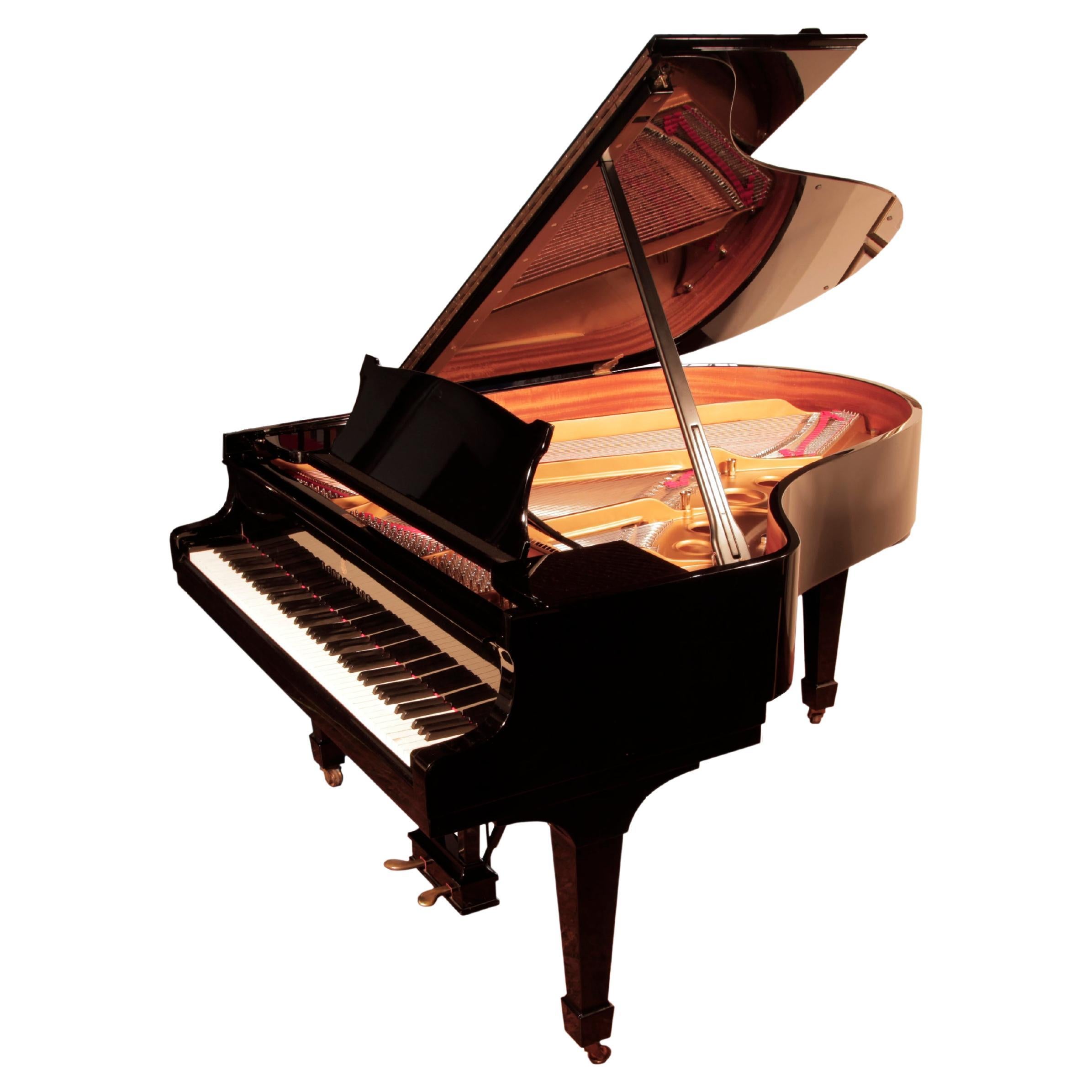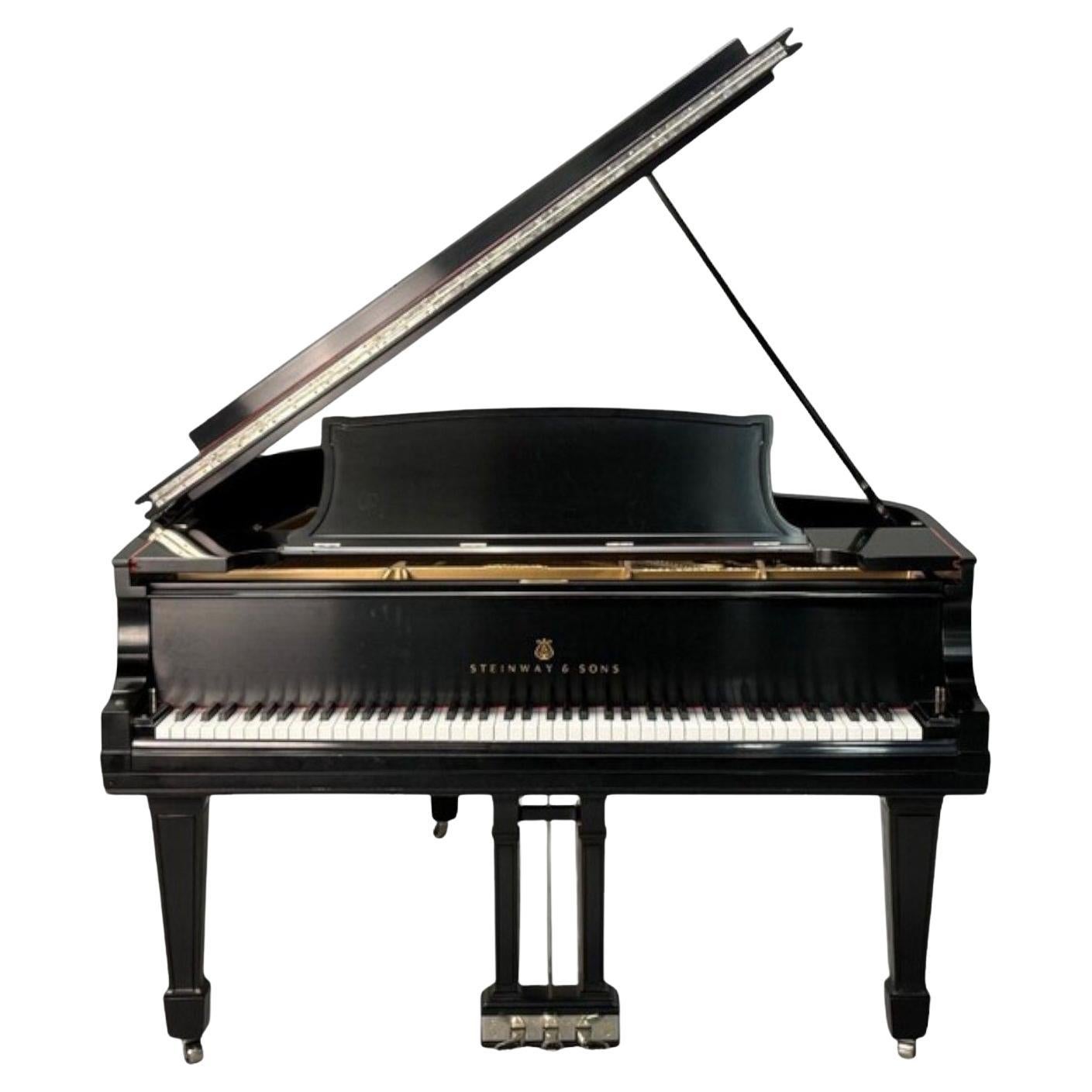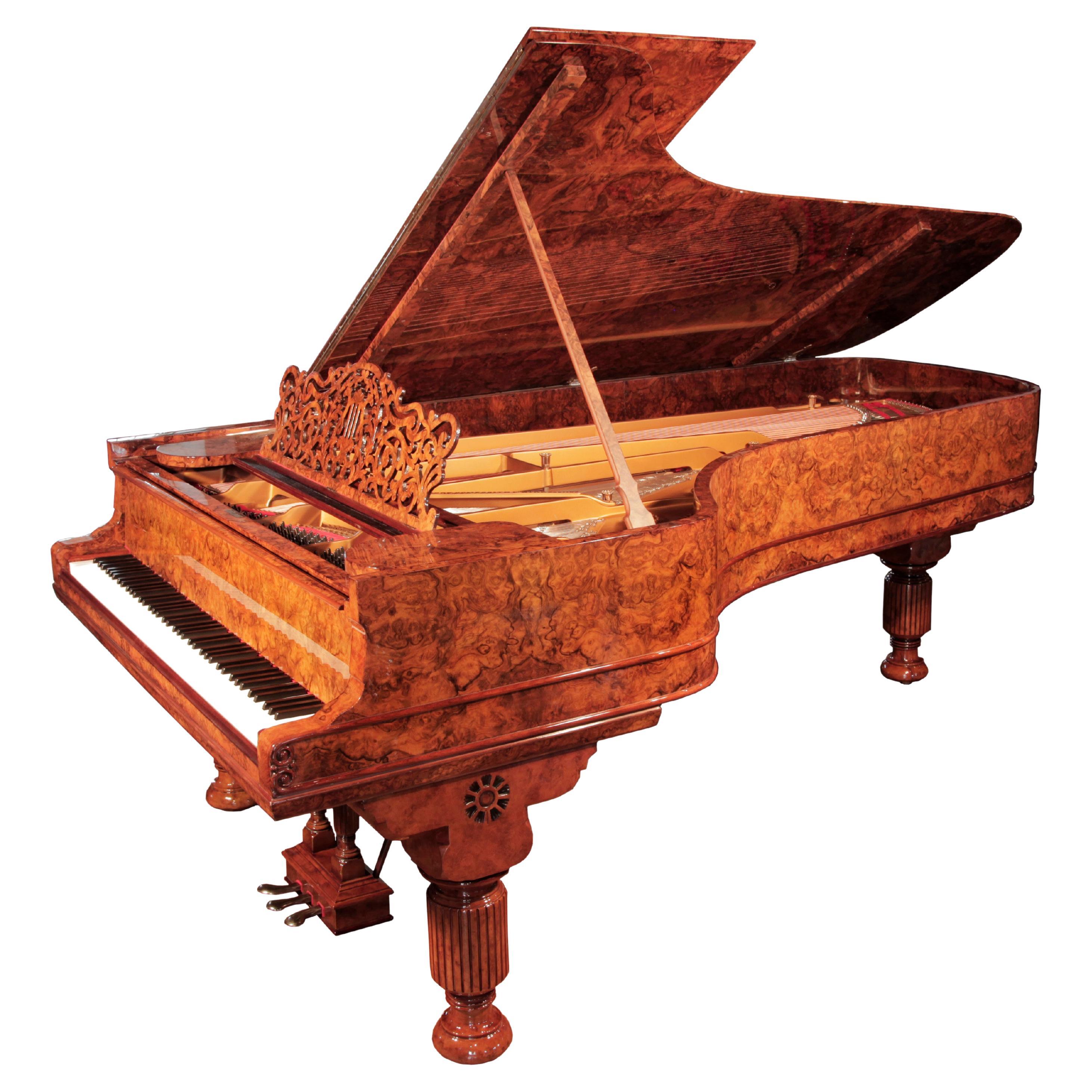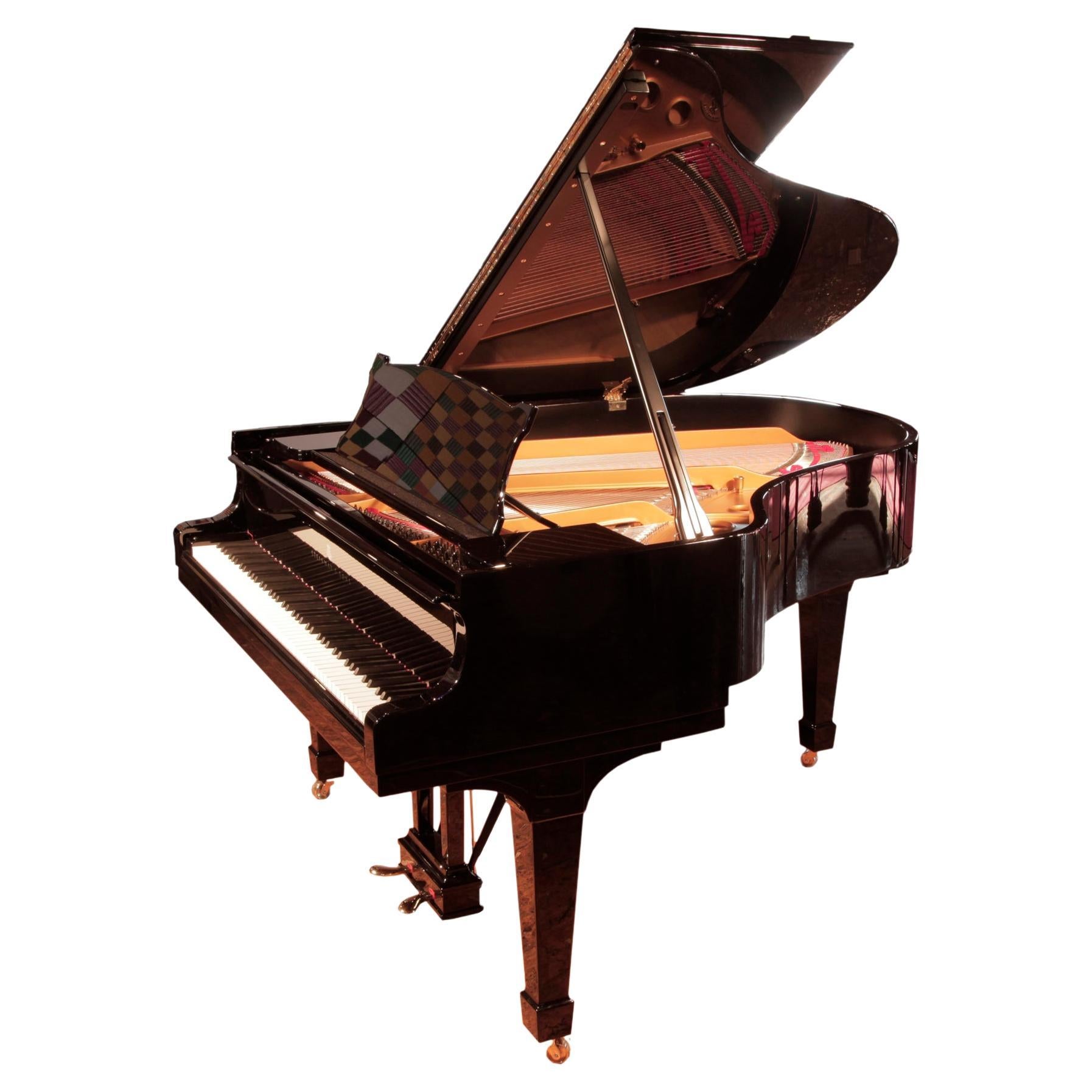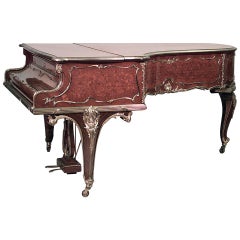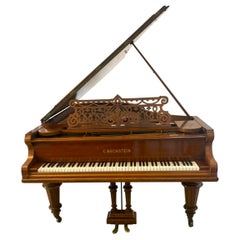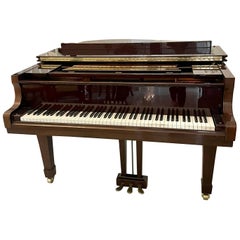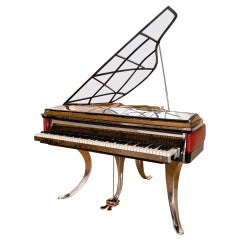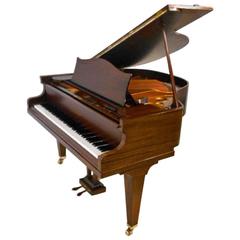
C. Bechstein Model "S" Grand Piano Mahogany, circa 1938
View Similar Items
1 of 5
C. Bechstein Model "S" Grand Piano Mahogany, circa 1938
About the Item
- Creator:Carl Bechstein (Maker)
- Dimensions:Height: 38.98 in (99 cm)Width: 59.06 in (150 cm)Depth: 57.49 in (146 cm)
- Place of Origin:
- Period:
- Date of Manufacture:circa 1938
- Condition:
- Seller Location:London, GB
- Reference Number:1stDibs: LU97586688113
Authenticity Guarantee
In the unlikely event there’s an issue with an item’s authenticity, contact us within 1 year for a full refund. DetailsMoney-Back Guarantee
If your item is not as described, is damaged in transit, or does not arrive, contact us within 7 days for a full refund. Details24-Hour Cancellation
You have a 24-hour grace period in which to reconsider your purchase, with no questions asked.Vetted Professional Sellers
Our world-class sellers must adhere to strict standards for service and quality, maintaining the integrity of our listings.Price-Match Guarantee
If you find that a seller listed the same item for a lower price elsewhere, we’ll match it.Trusted Global Delivery
Our best-in-class carrier network provides specialized shipping options worldwide, including custom delivery.You May Also Like
Louis XV Kingwood Grand Piano
By Carl Bechstein
Located in Queens, NY
French Louis XV-style ormolu mounted kingwood, tulipwood & parquetry grand piano (sgnd C.BECHSTEIN, numbered 20475 for the date 1888)
Category
Antique 19th Century French Musical Instruments
Materials
Ormolu, Brass
$125,000
Exceptional Quality Antique C.Bechstein Victorian Rosewood Boudoir Grand Piano
Located in Suffolk, GB
Exceptional quality antique C.Bechstein Victorian rosewood boudoir grand piano Model V (1898) having a superb quality rosewood lift up top opening to reveal an ornate adjustable musi...
Category
Antique 19th Century German Victorian Musical Instruments
Materials
Other
Yamaha Baby Grand Quality Mahogany Piano Model C2
Located in Suffolk, GB
Quality Yamaha baby grand piano with an overstrung iron frame, frame and sound board in perfect condition, mahogany case standing on square tapering legs wi...
Category
Late 20th Century English Musical Instruments
Materials
Other
$15,205 Sale Price
20% Off
PH Grand Piano Vintage Model '1935-1938' by Poul Henningsen, Modern, Sculptural
By Poul Henningsen
Located in Copenhagen, DK
This PH Grand Piano, serial number 4600, was manufactured between 1935 and 1938. It is an excellent-conditioned vintage instrument that has been careful...
Category
Vintage 1930s Danish Scandinavian Modern Musical Instruments
Materials
Chrome
$346,781
Free Shipping
Empire Style Ibach Model 2 Grand Piano Mahogany Case Ormolu Mounts
Located in Leeds, GB
Empire style, 1901, Ibach model 2 grand piano with a mahogany case and gate legs. Entire cabinet decorated with ormolu mounts depicting classical scenes of gods, goddesses and wreaths. This piano is one of 12 unique instruments made as exhibition models...
Category
Early 20th Century German Empire Musical Instruments
Materials
Mahogany
A German 19th Century Louis XVI Style Burr Walnut Bechstein Concert Grand Piano
By Bechstein Piano Company
Located in Los Angeles, CA
A Very Fine German 19th Century Louis XVI Style Burr Walnut Bechstein Concert Grand Piano, Serial No. 5655. The beautifully crafted Grand piano, raised on three tapered barrel shaped legs, with an intricately carved ornate music desk and original keys. Circa: 1872.
Length: 80 inches (203.2 cm)
Width: 59 inches: (149.9 cm)
Height (top closed): 38 5/8 inches (98.1 cm)
C. Bechstein Pianofortefabrik
C. Bechstein Pianofortefabrik AG (also known as Bechstein) is a German manufacturer of pianos, established in 1853 by Carl Bechstein.
Before Bechstein
Young Carl Bechstein studied and worked in France and England as a piano craftsman, before he became an independent piano maker. His first pianos were made for other companies.
C. Bechstein
C. Bechstein piano factory was founded on 1 October 1853 by Carl Bechstein in Berlin, Germany.
Carl Bechstein set out to manufacture a piano able to withstand the great demands imposed on the instrument by the virtuosi of the time, such as Franz Liszt. In 1857, Hans von Bülow (Liszt's son-in-law) gave the first public performance on a Bechstein grand piano by performing Liszt's Piano Sonata in B minor in Berlin
By 1870, with endorsements from Franz Liszt and Hans von Bülow, Bechstein pianos had become a staple in many concert halls and private mansions. By that time three piano makers, all of which were founded in 1853, became established as the industry leaders across the world: Bechstein, Blüthner and Steinway & Sons.
In 1881 Bechstein began supplying pianos to Queen Victoria. A gilded art-case piano was delivered to Buckingham Palace, followed by several more Bechstein pianos to Windsor Castle and other royal residences. By January 1886 they were among the piano manufacturers holding a Royal Warrant as a supplier to the Queen. Several British embassies across the world acquired Bechstein pianos.
In 1885, Bechstein opened a branch in London, that eventually grew to become the largest showroom and dealership in Europe. By 1890 showrooms had been opened in Paris, Vienna, and Saint Petersburg. On 31 May 1901, Bechstein Hall, built at a cost of £100,000, was opened next to the company's London showroom at 36-40 Wigmore Street. Between 1901 and 1914, C. Bechstein was the largest piano dealership in London. At that time, Bechstein was patronized by the tsars of Russia, the royal families of Spain, Belgium, the Netherlands, Italy, Sweden, Norway, Austria and Denmark, and other royalty and aristocracy. The list of royal clients of Bechstein may be found on the soundboard of vintage Bechstein pianos made before the Second World War. The list is part of the original Bechstein trademark logo; it can be seen under the strings in the center of a piano's soundboard.
The signature of Carl Bechstein
The years from the 1870s through 1914 brought Bechstein their most dramatic increase in sales. In 1880 a second Bechstein factory was opened in Berlin, and the third factory was opened in 1897 in Berlin-Kreuzberg. Production reached 3,700 pianos annually in 1900, and 4,600 in 1910, making Bechstein the largest German manufacturer of high-end pianos. At that time, about three quarters of production went to international markets, especially Britain and the Commonwealth, and Russia.
Carl Bechstein died in 1900, and the Bechstein company continued to operate under the management of his sons.
Between 1900 and 1914 C. Bechstein was one of the leading piano makers in the world, employing 1,200 craftsmen and workers by 1913 and making five thousand pianos per year.
First World War
C. Bechstein suffered huge property losses in London, Paris, and St. Petersburg during World War I. The largest loss was in London. Although the company's position in the United Kingdom was initially unaffected, with the company still listed as holding a Royal Warrant in January 1915, Warrants to both King George V, and his wife Queen Mary were cancelled on 13 April 1915. Bechstein was not the only musical concern to be affected by growing anti-German sentiment: there were earlier attempts, led by William Boosey, to boycott German music altogether. In 1915, despite being a Baronet and Privy Counsellor, Sir Edgar Speyer, who was then funding the Proms, was forced to leave the country. Following the passing of the Trading with the Enemy Amendment Act 1916 the British arm of the company was wound-up on 5 June 1916, all Bechstein property, including the concert hall and showrooms full of pianos, were seized as "enemy property" and closed. In 1916 the hall was sold as alien property at auction to Debenhams for £56,500. It was renamed Wigmore Hall, and then re-opened under the new name in 1917. All 137 Bechstein pianos at the Bechstein showrooms were confiscated too, and became property of the new owner of the Hall. After a dispute with his brother, Edwin Bechstein left the company and was paid off.
Eventually the Bechstein factory resumed full-scale production during the 1920s. At that time, technical innovations and inventions of new materials and tools, as well as improvements in piano design and construction, had allowed Bechstein to become one of the leading piano makers again.
The most successful models were the updated "A"-185 and "B"-208 grand pianos. The upright pianos became more popular after the war, and C. Bechstein were successful with its upright pianos Model-8 and Model-9, both of which have been considered the finest upright pianos.
As the company was changed into a joint-stock company 1923, Edwin Bechstein and his wife Helene, bought themselves back into the company as shareholders.
In 1930 the company collaborated with German electrical goods manufacturer Siemens under Nobel laureate Walther Nernst to produce one of the first electric pianos...
Category
Antique 19th Century German Louis XVI Musical Instruments
Materials
Bronze
$49,850 Sale Price
33% Off
Recently Viewed
View AllMore Ways To Browse
C Bechstein Grand Piano
Brionvega Totem
Broadwood Piano
Bullet Radio
C Bechstein Grand Piano
Chinese Dinner Gong
Collectibles Stereos From 1970s
Disk Player
Electro Voice Vintage Speakers
Fada Radio
Fada Radios
Flugelhorn Used
Freres Rochat Gold Bird Box
Freres Rochat
German Bird Music Box
Guitar Amplifier
Hamburg Steinway Piano
Hans Stereo
